Saudi wedding Halls
The smell of oud incense wafts through the air on a gentle breeze through the Al Shafa district of Riyadh. Scores of cars descend from all directions disgorging their occupants for the celebrations ahead of them.
All over Saudi Arabia parties are taking place in specially designed wedding halls – sometimes weeks after the actual marriage has taken place. Wedding Halls are actually pairs of halls, of which one is used for the men and the other for women (and sometimes children.) The sexes are strictly segregated, of course.
Most marriages in Saudi Arabia are arranged through family connections with options for the potential bride and groom to accept or reject a union. They usually only get to meet once – with some exceptions – but the potential couple are never left alone. Normally the womenfolk will act as strict chaperones. This will be the one time that the woman can be unveiled in front of a male other than her mahram - that is her father, brother, uncle or husband. Some are allowed to talk on the phone a few times, though most are not until the actual mulka (marriage contract) has been signed. The mulka has the full force of the law and covers anything that either party wishes to include.
Saleh Al-Zomei is the proud owner of two of Riyadh’s newest, and biggest, wedding halls – The Marina Palace and, next door, the Lazord Palace. His is a successful business model, since typically he will charge the equivalent of US$5,000 for a celebration of some 600 people; and in his first season he is already averaging four weddings every week.
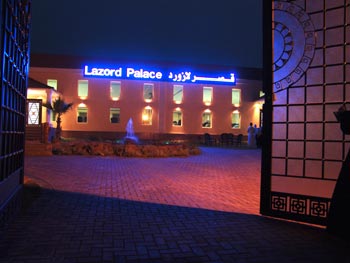
But Saleh stands apart from the competition for, when the palaces were in the planning stages, he had the foresight to realise that if he drew his electricity supply from the state-owned Skeeco he would be paying a hefty premium for the privilege.
Instead he invited the Al Faddaghi Group – Scania’s sole distributor in the Kingdom – to install a pair of DC16 diesel generators to power the two halls – each of which can deliver a staggering 1250 amps at 220 volts. “It has revolutionized my business,” beams Saleh. “Despite the fact that we are using so much more power than our neighbouring competition, it is costing us considerably less – so much so that the generators will have paid for themselves in under a year!”
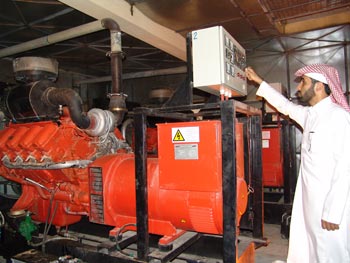
One main reason for his purchase was the amount of maintenance coverage that was offered. “The machines have never ever broken down, al hamdullilah,” said Saleh; “but in the unlikely event that there was a problem, I can rest assured that help is just a phone call away.”
The vast majority of the power generated is used for the massive air conditioning units. In the summer months desert temperatures can reach in excess of 50 degrees Celsius and with up to 1,000 guests at a function, that’s an awful lot of heat to dissipate!
Much is also used for the vast kitchens which provide a constant supply of qahwa – or Saudi-style coffee – sweets, tea, hors d’oeuvres, and, eventually, dinner. The men settle for a traditional lamb kabsa whilst the women next door are served a buffet style meal.
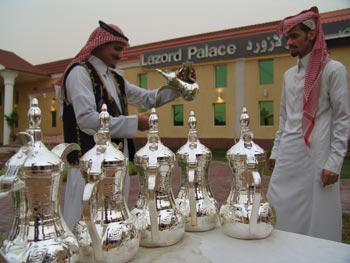
The rest of the power drives the vast chandeliers, fountains, other water features and laser lights – the most spectacular of which are on the female side.
In the Lazord Palace, the women’s hall features a pond over which a bridge stretches to a raised dais featuring a bridal thrown. During the course of the evening, the bride and groom make an entrance, possibly followed by fathers and uncles, at which time all other females present will cover up. They stay for a very short duration during which photos are taken of the bridal party and then all of the men – including the groom – retire from the hall. Following this, the bride will receive congratulations from the other women present.
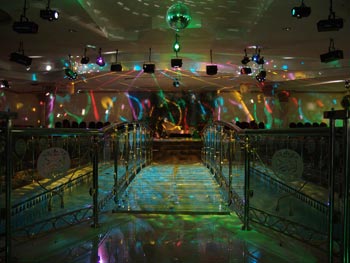
The men turn up to their gathering in their traditional clothing whilst the groom – or those of important status – will also wear a bisht (or gold trimmed robe) over their white thobes. The women, on the other hand, are decked out in haute couture fashion gowns with the bride wearing the same white wedding dress as is commonly found in the west.
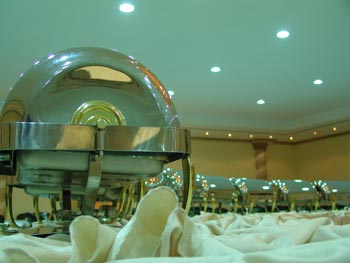
Normally the men make small talk and leave much earlier than their female counterparts, who will often dance to an all-female live band and to the beat of a tavla into the wee small hours.
Eventually the celebrations draw to a close, the female guests ring their drivers for collection and the band packs up to go home. The fountains are turned off, the kitchens are closed, the air conditioning is switched off and the lights are extinguished. At last, like a pair of lovebirds, the DC16s can snuggle down for another well deserved rest.
